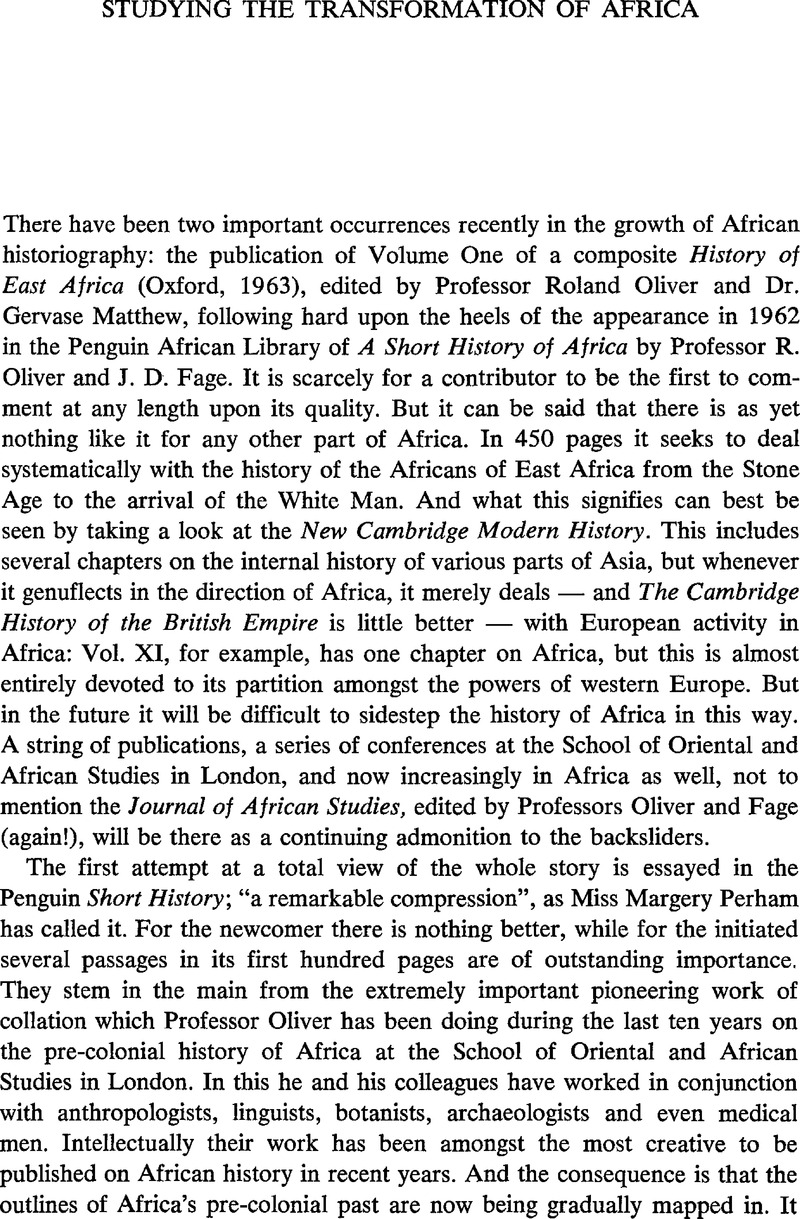No CrossRef data available.
Article contents
Studying the Transformation of Africa
Published online by Cambridge University Press: 03 June 2009
Abstract

- Type
- Africa in Transformation
- Information
- Copyright
- Copyright © Society for the Comparative Study of Society and History 1964
References
1 By the way, I don't intend in the least to preach what a zealous young psychologist, utterly unconscious of the irony, once called “The Gospel of the Contingency Tables”. I am using here, and later, the statistical model purely as a schema for logical analysis.
2 For a detailed discussion of the elementary significance of collective orientations to time, see Kluckhohn, Florence R. and Strodtbeck, Fred L., Variations in Value Orientation, Roe, Peterson & Co., Evanston, III., 1961.Google Scholar
3 I have a hunch that young people would have the same reaction in any contemporary, largely urbanized and industrialized society. We do not know what Japanese youth felt and did before the defeat; but we do know that a quasi-restorationist group held the reins of power and manipulated public opinion. How young people will vote or act, will depend on freedom and prohibition in the institutional structure of their country. This does not mean that their concern is not (at least in a rudimentary from) the same as that of all young people. The reaction of German youth of the twenties in an official framework of different transformationism, and the arguments of the young intelligentsia in present-day “totalist” Russia would offer a stimulating comparison to Dr. Lifton's analysis of Japanese youth.
4 For a comprehensive psychological investigation of this type, see: Adorno, T.W., Frenkel-Brunswik, , Else, , Levinson, D.J. & Sanford, R.N., The Authoritarian Personality, New York: Harper, 1950.Google Scholar
5 For a view according to which the conflict of generations is the major source of social change, see: Bettelheim, B., “The Problem of Generations”, Daedalus, 91 (Winter, 1962), pp. 68–96.Google Scholar
6 For a detailed discussion of this point, see: Wyatt, F., “The Reconstruction of the Individual and of the Collective Past”, in White, R.W. (ed.) The Study of Lives, New York: Atherton, 1963.Google Scholar
7 For a theory of mass behavior as a potential of historical change, see: Smelser, N.J., Theory of Collective Behavior, Free Press, New York, 1963.CrossRefGoogle Scholar


